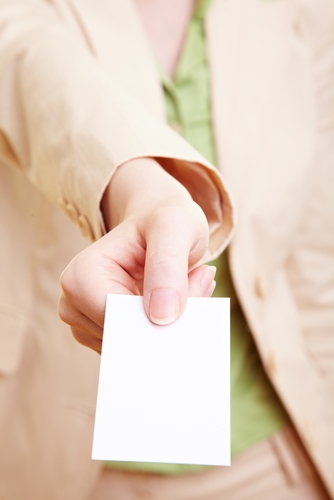Business cards are among the most effective and powerful means to introduce others to your skills and company. Instead of going on and on about yourself and your business, let your custom business cards do all the talking you need. This tiny, yet compelling card can make or break a first impression, so there are certain factors one should consider to make the card a perfect snapshot of your services and your personality.
Here are some simple steps to follow when creating your business card:
Style
It's important to choose a card theme that appropriately reflects your business, industry and personal style. For example, if you're in advertising, you'll want to get colorful and creative. If you're a photographer, select a couple of your best photos to occupy the back of the card. If you're a lawyer, keep it professional and traditional with classic looks.
Information
Information such as your full name, address, company name, position or title, phone number, email address and store hours, if applicable, are all crucial points that should be included on your business card. Website and fax number are optional, but if you're in the creative industry with a full-fledged portfolio website, definitely add that. A company or personal logo is an important detail that you should put on your business card as well. Tip: Your name should be set in the largest font on your card.
Typeface
Make your business card easy to read. Most cards are all ready small as it is, so having to read a plethora of information in a tiny curly-cued font won't do you any good. It's important that you chose a clear typeface that is proportionally sized and doesn't lead to eye strain.
Color scheme
Don't get too crazy with your color scheme, as certain shades are difficult to read when set against a particular backdrop. High contrast is important here, so options such as a light background with a dark typeface, or vice versa, is the most effective route to take. If you're looking to add multiple shades to your business card, go with a contrasting or complementary color scheme, as these tend to be softer on the eyes. As a general rule, never pair yellow and red together. These two shades are hard on the eyes, making it difficult to read information. In addition, avoid textured backgrounds and pairing two colors of the same hue together.
Stand out
Over the years, professionals tend to accumulate an abundance of business cards that collect dust in their desk drawers. To avoid having your card being added to the stock pile, make the look worth remembering. To do so, consider adding your headshot to the card so you're easily and immediately recognizable. Cut-out images are another way to make your card stand out more. This also adds some depth!
Material
Make yourself even more distinguishable and hand out tactile cards. Typically, your standard business card is made form cardstock. Go for a nonstandard material such as metal or wood, or cards with unusual shapes, edges, folds, embossing or foil detailing. These types of cards are often more appealing, therefore, easily remembered.
The flip side
Take advantage of the back of your card – this is a prime spot, don't leave it blank. You could use this space to include a map to your storefront or business if you're a retailer. Also, consider adding a promotional coupon for your customers to enjoy, such as offering a 10 percent discount on your first purchase.

